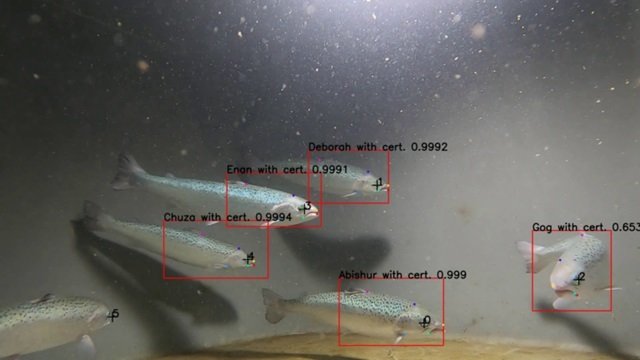In this digital age, the integration of Artificial Intelligence (AI) techniques has become a revolutionary solution. AI, with its advanced algorithms and data-driven capabilities, is proving to be an indispensable tool for optimizing fish farming practices, ensuring healthier fish populations, and ultimately promoting sustainable aquaculture.
In this context, researchers from the University of Burdwan have published a scientific review on the role that Artificial Intelligence can play in monitoring fish growth and health.
The Role of AI in Fish Growth and Health Monitoring
Artificial Intelligence, encompassing machine learning and computer vision, is driving a transformative change in aquaculture. Its capacity to analyze extensive datasets collected in fish farms has opened unprecedented opportunities to understand fish growth patterns, feeding behaviors, and factors affecting fish health.
Through AI algorithms, fish farmers can gain valuable insights into their fish’s growth models, feeding behavior, and environmental factors affecting fish health.
Proactive Health Management
AI algorithms offer the ability to detect and predict anomalies, diseases, and stress indicators in fish. This capability enables farmers to intervene proactively, mitigating potential health issues and minimizing losses.
By leveraging AI, the aquaculture industry is transitioning from reactive responses to proactive health management.
Smart Monitoring Systems
One of the most significant applications of AI in aquaculture is the development of intelligent monitoring systems. These systems utilize sensors, cameras, and data analysis tools to continuously collect real-time data on critical parameters such as water quality, temperature, oxygen levels, and fish behavior.
AI algorithms process this data, identify deviations from optimal conditions, and provide real-time alerts to farmers. This enables immediate adjustments in feeding schedules, water parameters, or treatment administration, improving the welfare and growth of farmed fish.
Stay Always Informed
Join our communities to instantly receive the most important news, reports, and analysis from the aquaculture industry.
Optimizing Feed Management
AI-based models are revolutionizing feed management in aquaculture. By analyzing historical data on fish growth and feed consumption, machine learning algorithms determine the most efficient feed formulation and feeding regimens. This optimization minimizes waste, reduces environmental impact, and significantly improves growth rates.
Disease Detection and Prevention
AI, powered by image analysis and pattern recognition, can detect early signs of diseases, parasites, or abnormalities in fish appearance and behavior. This capability enables rapid disease diagnosis and targeted treatment, reducing the reliance on antibiotics and chemicals. In the process, it enhances fish welfare and lowers the environmental impact of aquaculture operations.
Conclusion
In summary, the integration of AI into monitoring fish growth and health offers a promising path towards a sustainable aquaculture industry. AI’s proficiency in data analysis, pattern recognition, and predictive modeling enables fish farmers to optimize their practices, increase productivity, reduce environmental impact, and ensure the welfare of farmed fish.
However, realizing the full potential of AI in aquaculture requires ongoing research, data sharing, and collaboration among scientists, industry stakeholders, and policymakers.
The partnership between technology and aquaculture promises a more sustainable and prosperous future for the industry. As we continue to leverage the transformative potential of AI, we are paving the way for an aquaculture sector that can meet global demands for seafood while safeguarding the environment and the well-being of the fish we cultivate.
Contact
Arghya Mandal
Department of Environmental Science, The University of Burdwan,
West Bengal, 713104, India
Email: arghyamandal065@gmail.com
Reference
Mandal, A., Ghosh, A.R. Role of artificial intelligence (AI) in fish growth and health status monitoring: a review on sustainable aquaculture. Aquacult Int (2023). https://doi.org/10.1007/s10499-023-01297-z
Editor at the digital magazine AquaHoy. He holds a degree in Aquaculture Biology from the National University of Santa (UNS) and a Master’s degree in Science and Innovation Management from the Polytechnic University of Valencia, with postgraduate diplomas in Business Innovation and Innovation Management. He possesses extensive experience in the aquaculture and fisheries sector, having led the Fisheries Innovation Unit of the National Program for Innovation in Fisheries and Aquaculture (PNIPA). He has served as a senior consultant in technology watch, an innovation project formulator and advisor, and a lecturer at UNS. He is a member of the Peruvian College of Biologists and was recognized by the World Aquaculture Society (WAS) in 2016 for his contribution to aquaculture.




